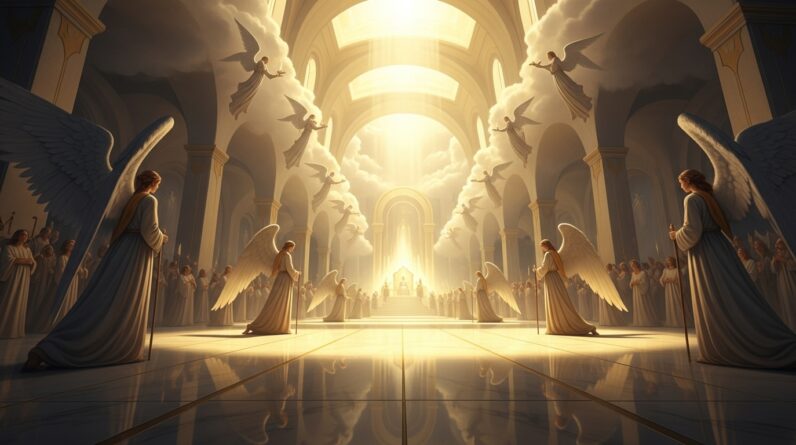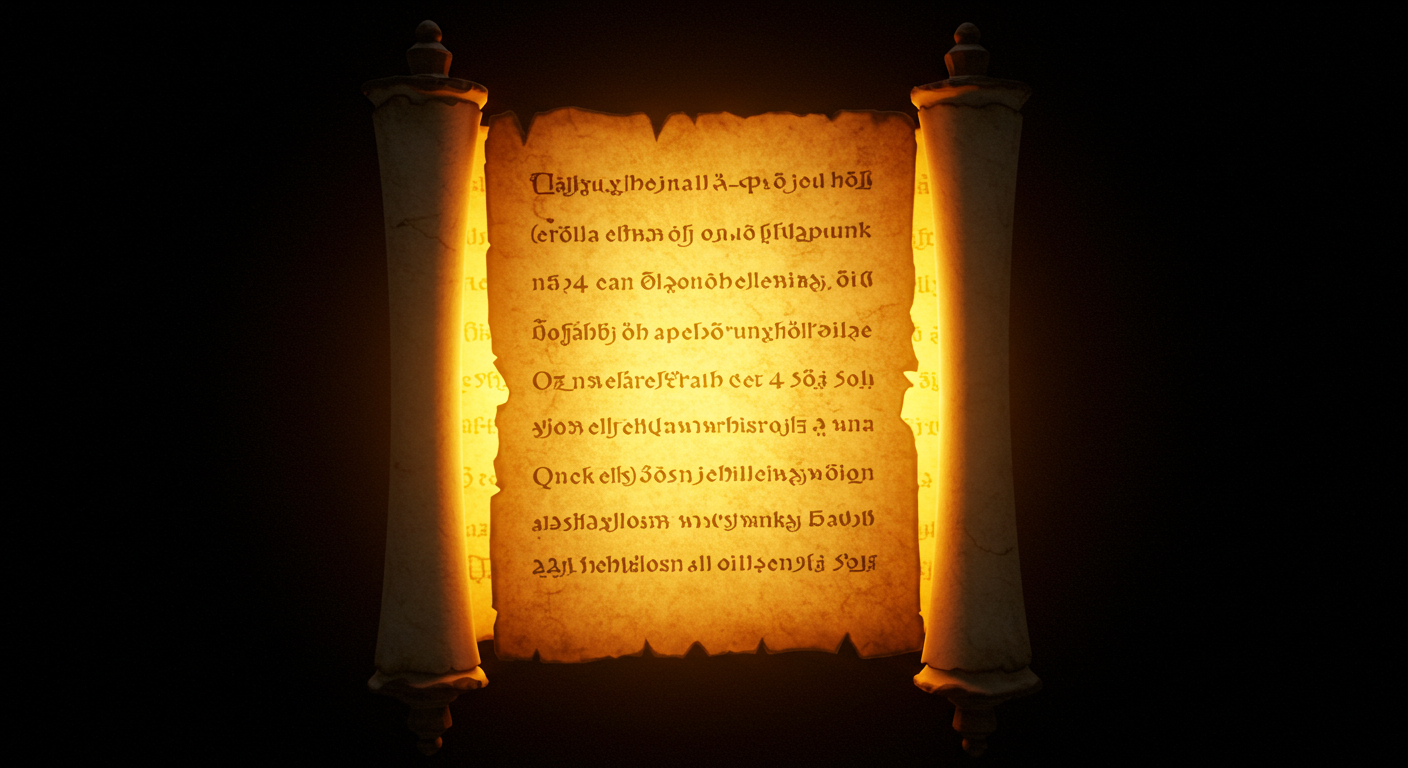Explore the profound symbolism of “The Woman Clothed With The Sun” in Revelation 12:1. Unveil the theological significance and enduring hope in this vivid biblical vision.
The Woman Clothed With The Sun: Who Is She? – Revelation 12:1
Introduction to Prophetic Visions
When you dive into the depths of the Bible, you’ll often come across striking and vivid images that seem surreal yet profoundly significant. These are prophetic visions. In the biblical context, prophetic visions can be described as divine experiences granted to prophets, often serving as God’s medium to communicate celestial messages about future events, divine will, or moral instructions. These visions are crucial; they transcend mere words by painting a picture that’s both symbolic and powerful, offering insights that verbal explanations might fail to capture entirely.
But why did God choose this particular method of communication? You see, visions have a way of transcending time and culture, speaking directly to both the heart and mind. They serve not just as messages but as powerful, transformative experiences for those who receive them. Prophetic visions beckon the prophets and us as readers of Scripture to a deeper understanding of divine mysteries and truths.
Now, let’s transport ourselves to the times of yore when these visions occurred. Imagine a world steeped in various cultures, historical events, and religious practices that shaped the experiences of the prophets. Understanding this historical and cultural backdrop is key to fully appreciating the weight and magnitude of these prophetic visions. It’s like stepping into another world, filled with divine encounters that speak volumes even today.
Context of Each Prophetic Vision
To delve deeper into the vision of “The Woman Clothed with the Sun,” as recorded in Revelation 12:1, let’s first set the stage with the surrounding scriptural narrative. Revelation, the final book of the New Testament, paints a series of apocalyptic visions given to John the Apostle. This vision unfolds after a sequence of significant events, dragging us into a cosmic drama set against the backdrop of spiritual warfare.
John, exiled on the island of Patmos, serves as the receptive vessel for these revelations. His mission wasn’t simple—imagine trying to convey such profound messages filled with symbolism and urgency to early Christians facing persecution. The challenges were immense, yet the visions he received carried the weight of divine purpose and promise.
Now, let’s zoom in on the vision itself. Picture this: a majestic woman, clothed with the sun, the moon under her feet, and a crown of twelve stars on her head. This imagery is rich and packed with symbolism. The sun signifies her radiance and glory, the moon under her feet suggests dominion and stability, while the crown with twelve stars could represent the tribes of Israel or the apostles of Christ. Such symbols aren’t stand-alone props—they are woven into the larger tapestry of biblical messages, embodying themes of divine favor, authority, and the culmination of God’s redemptive plan.
Theological Significance
Peeling back the layers of this vision reveals its profound theological implications. At its core, this vision speaks of God’s sovereignty and His overarching plan of redemption. Embodying both motherhood and heavenly glory, the woman signifies the people of God—historically Israel and, in a broader sense, the Church. Her appearance marks a crucial juncture in the divine narrative, emphasizing the convergence of God’s promises with their fulfillment.
The vision also touches on themes of suffering and triumph. As the narrative unfolds, the woman faces a dragon—imagery often associated with Satan or evil forces—indicating a period of trial and tribulation. Yet, her preservation and her child’s destiny echo the triumph of divine intervention. This celestial drama encapsulates the perpetual struggle between good and evil, underscoring God’s ultimate victory and the hope of redemption for His people.
Interpretation of the Vision’s Message
For the early Christians, grappling with persecution and uncertainty, this vision carried an immediate and potent message. It reassured them of God’s continual presence and sovereignty despite adversity. The imagery of the woman—clothed in celestial brilliance and divine favor—served as a reminder of their protected status within God’s grand design. It infused hope, reminding them that divine victory was imminent, even as they faced earthly trials.
Historically and spiritually, many scholars believe parts of this vision have found fulfillment in events like the birth of Christ and subsequent persecution of the early Church. The woman’s child, often identified as Jesus, signifies God’s redemptive plan through His incarnation, life, death, and resurrection. Thus, the vision serves not just as a glimpse into cosmic warfare but also as a testament to prophetic fulfillment and the unfolding of God’s salvific history.
But how does this vision speak to us today? The struggles, the sense of awaiting redemption, and the ultimate hope depicted in the vision resonate deeply with contemporary believers. It reminds you that amid turmoil and challenges, God’s promises hold. The imagery serves as both a spiritual and moral compass, guiding you toward resilience, faith, and hope in the ultimate triumph of God’s plan.
Comparative Analysis
Comparing this vision with other biblical prophetic visions reveals intriguing similarities and differences. Take, for instance, the visions of Isaiah or Ezekiel, wherein symbolic elements like animals, numbers, or celestial objects also play vital roles. These common threads underscore recurring themes of divine authority, judgment, and redemption. Yet, the vision in Revelation stands out in its apocalyptic intensity and overarching eschatological focus.
From a historical perspective, interpretations of Revelation’s visions have significantly impacted theological discussions and eschatological studies. Across different traditions—be it Preterist, historicist, futurist, or idealist views—each offers unique insights into the vision’s implications for understanding end times. This diversity in interpretations enriches your comprehension, revealing the multifaceted nature of prophetic visions.
Conclusion
In wrapping up, the vision of “The Woman Clothed with the Sun” in Revelation 12:1 is a profound tapestry of divine truth. It speaks to historical events, encapsulates theological themes of divine sovereignty and redemption, and offers lasting hope for believers across ages. By unpacking its imagery and understanding its context, you’re invited to marvel at the intricately woven story of God’s ultimate plan.
Prophetic visions, like the one examined, serve not just as historical or theological milestones but as living, breathing messages that continue to inspire, challenge, and fortify your faith. They remind us of God’s timeless wisdom and purposeful narrative, urging us to trust in the divine plan.
Additional Resources
For those eager to delve deeper, immersing yourself in further biblical texts and scholarly articles can enrich your understanding:
- “The Book of Revelation” by G.K. Beale
- “The Prophecies of Revelation” by J. Webb Mealy
- “Revelation and the End of All Things” by Craig R. Koester
To stimulate deeper reflection and group discussions, consider these questions:
- How does the vision of the woman clothed with the sun speak to your personal faith journey?
- What modern parallels can you draw from the visions in Revelation and current world events?
- How do various interpretations of this vision impact your understanding of biblical prophecy?








